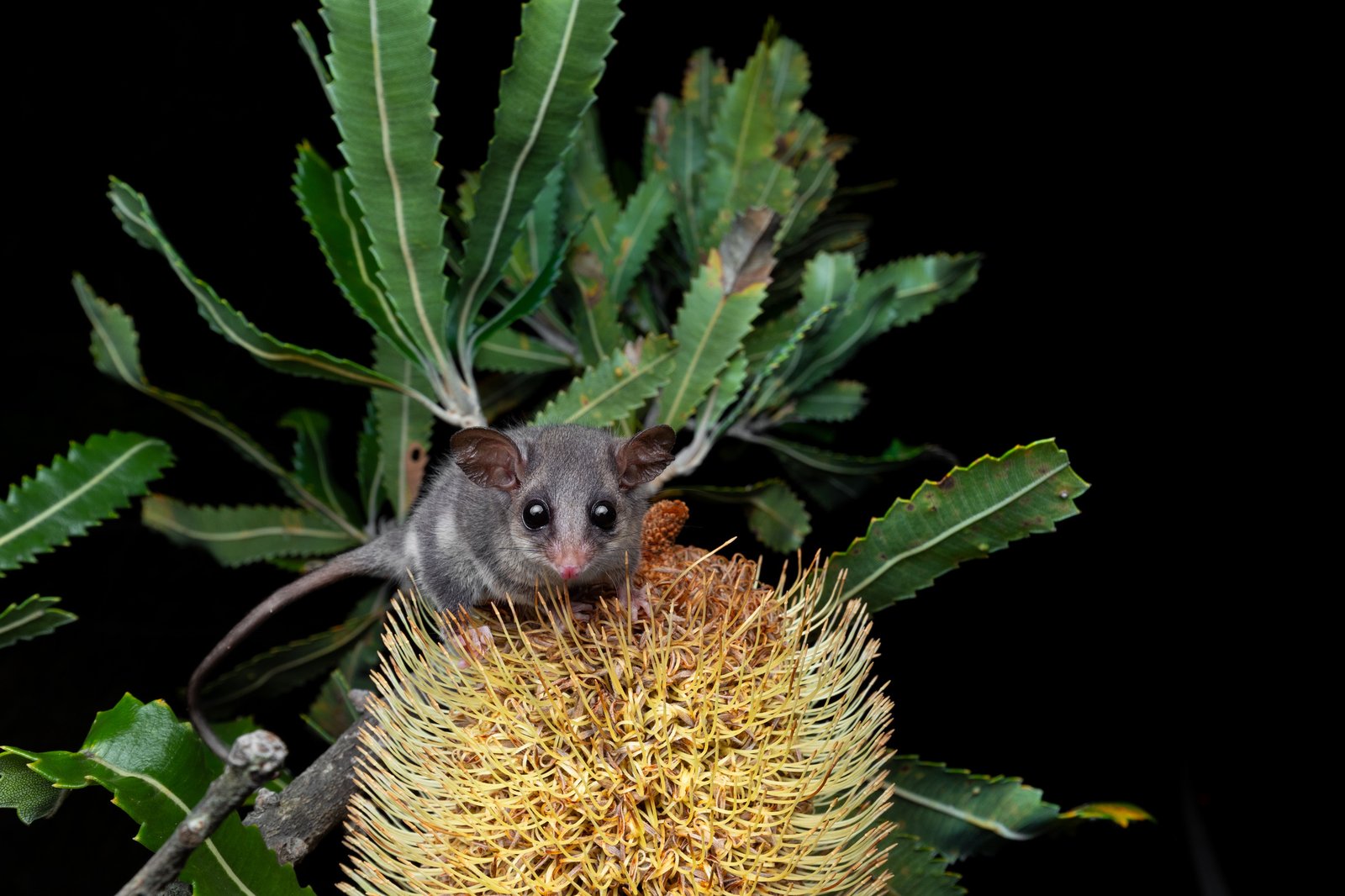Eastern Pygmy Possum
Sometimes mistaken for a rat or mouse.
Introduction
The Eastern Pygmy Possum is a tiny marsupial.
Identification
The Eastern Pygmy Possum has the following distinguishing features:
- Front teeth Three pairs of upper incisors, one pair of lower incisors.
- Head Rounded head and very large eyes. Long whiskers.
- Ears Large ears.
- Colouring Fawn above, white below. Soft dense fur.
- Tail Prehensile tail with seasonally fattened base, naked underside, furred above, tapers to fine point. 75-105 mm.
Similar species
Sometimes mistaken for a rat or mouse.

© CC BY-NC 4.0
Where do Eastern Pygmy Possum live?
Habitat
The Eastern Pygmy Possum lives in forests, from rainforest and sclerophyll to heath.
Distribution
What do Eastern Pygmy Possums eat and how have they adapted?
Feeding and diet
The Eastern Pygmy Possum feeds on nectar and pollen from eucalypts, banksias, and bottlebrushes, supplemented by insects and fruit.
Other behaviours and adaptations
Eastern Pygmy Possums are nocturnal.

© CC BY-NC 4.0
What is the life cycle of Eastern Pygmy Possums?
Life history cycle
Mother Eastern Pygmy Possums nest with their young in tree hollows or in small spherical nests of shredded bark. The possums may also shelter in abandoned bird nests or the forks of trees.
Support the Australian Museum
Your donation supports the exceptional work of our inspiring scientists, explorers and educators as they help to protect Australia’s vital natural and cultural heritage for generations to come.
Donate now

